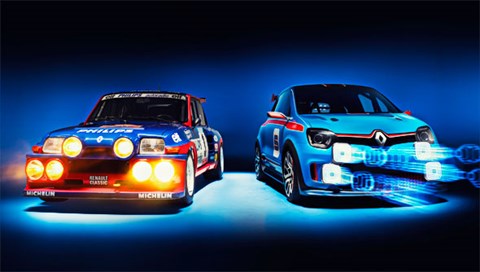
A head reaches upwards, brown and leathery as an ’80s ruched-hide Mercedes door panel, and tugs the tall, slender metal gearlever sharply backwards. Two seconds later, another tug. Then another. There’s no discernible let-up in thrust, just a change in pitch from the V6 engine screaming behind our heads, lead vocal to a backing track of droning gear whine. The last time I was at this track I was nursing a fragile electric Zoe concept at sub-30mph speeds. This time I feel like I’ve stumbled into some qualifying session for a Group B Tarmac rally.
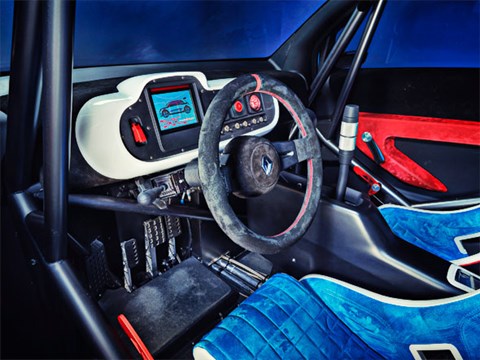
We’re strapped into Renault’s Z28BR (Boy Racer) Twin’Run concept, which hints at the styling direction of the next Twingo city car due in late 2014, but also tips its hat to Renault’s history of bonkers rear-engined hatchback mutants, including the legendary rally-winning 5 Maxi Turbo you can see on these pages. When Renault revealed the Twin’Run with a flying lap at the Monaco Grand Prix’s practice day last month (a trick it also used with last year’s Alpine concept) it was tailed by a Clio V6 and this Maxi Turbo, the latter driven by one Jean Ragnotti. Ragnotti drove that same car back in 1985, fending off attacks from Lancia’s 037, Peugeot’s 205 T16 and an Audi Sport Quattro to win the 1985 Tour de Corse, an event which claimed the life of Lancia driver Attilio Bettega. Today, Ragnotti’s come to try the Twin’Run for himself – and we’re riding shotgun.
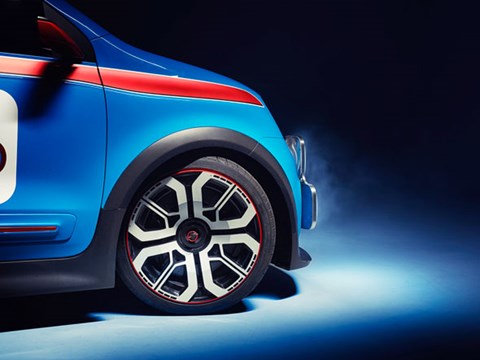
I’d last passengered with Ragnotti 11 years ago when I watched him grapple with alternating under- and oversteer as he tried and failed to slide a second-generation Clio V6 around a soaked Silverstone in a drift competition.
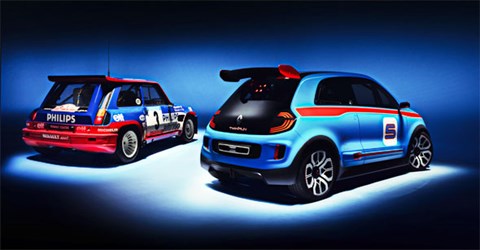
‘The Clio V6 wasn’t an easy car to drive fast,’ says the dishevelled Columbo lookalike diplomatically, as we wait for the mechanics to complete their final checks. He motions with a thumb to the plastic screen separating our passenger compartment from the boiler room. ‘There was too much weight at the back, and the engine was too high.’
This time though, he’s very definitely in charge, lifting his right foot to tuck the nose into the long corners and nip understeer in the bud, getting back on the power early to make use of the traction, and Scando-flicking the thing into the one hairpin and riding out the resulting slide in a way you never could in a Clio V6.
Okay, so that was a road car and this concept is effectively a purpose-built racer disguised as the next Twingo, but there’s a key difference in their make-up. While both are powered by V6 engines, the Clio’s was transversely mounted, placing the engine and gearbox alongside each other close to the rear axle. But this Twin’Run’s engine is mounted longitudinally, and ahead of the axle, as a supercar’s is, and as the original 5 Turbo’s was.
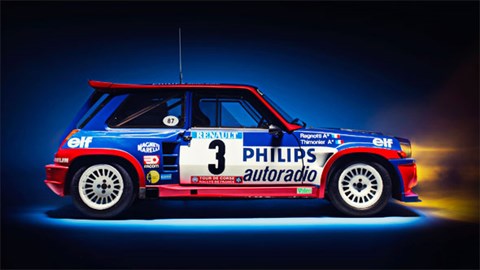
The 5 Turbo story begins in the mid 1970s when Renault decided it wanted another taste of the rally success it had enjoyed with the now-departed Alpine A110. Looking to the popular 5 supermini, Renault first launched the hot-hatch Alpine version – a car sold in the UK as a Gordini, due to Chrysler owning the rights to the Alpine name. Front-engined versions of the 5 Alpine had already met with some rally success, including a double podium finish at the ’78 Monte, when only a Porsche 911 kept the little machines from the top spot. Fitting then, that the next step in the 5’s development would be to slot its engine behind the cabin.
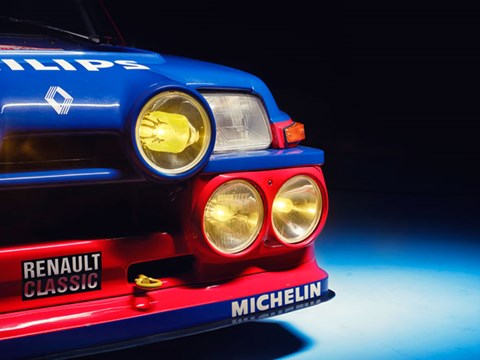
This isn’t as crazy as it sounds. The Alpine A110 and its A310 successor were both rear-engined, and Renault’s mid-century showroom machinery, the 4CV, Dauphine, 8 and 10, all had their engines behind the cabin. The 5’s unusual-for-its-class front double wishbone and torsion bar suspension remained, but the rear torsion bars were ditched for double wishbones and coil springs from the A310 coupe. All hidden beneath Marcello Gandini’s massive fibreglass rear arches. Fibreglass was also used for the vented bonnet and flared font wings, while the doors, roof and rear hatch were constructed from aluminium.
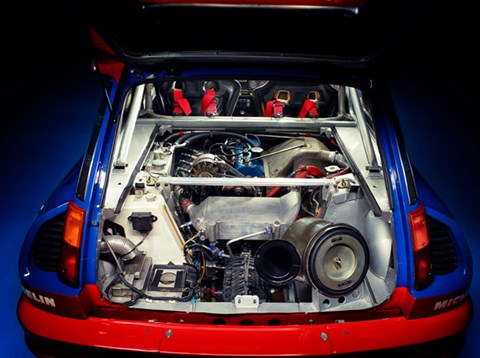
All of which would have been complete overkill if the 5 Turbo didn’t have the muscle to back up the pose. So housed in a bespoke chassis substructure at the rear of the car – with a five-speed gearbox following behind in true supercar style – the little 5 Alpine’s 1.4 pushrod four received a stronger crankshaft, carburettors were ditched for fuel injection and a Garrett T3 turbo and intercooler were added, almost doubling the original 92bhp output to 158bhp. Performance was brisk, though perhaps not as wild as the styling suggests: 60mph in less than 8.0sec and a top speed of nearly 130mph. But that was just the road car. The rally cars pushed out slightly more, as allowed under the Group 4 regulations, though they had nothing on the Maxi Turbo that followed. Introduced in 1984 to take advantage of the new Group B rules, under which almost everything was fair game, the Maxi was the ultimate 5. Cost pressures meant it stuck with rear-wheel drive, but the larger 1527cc engine, featuring key parts shared with Renault’s turbocharged F1 motors, was pumping out 345bhp.
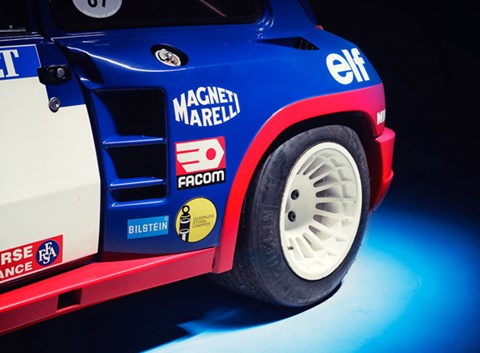
The Twin’Run musters only slightly less, its naturally aspirated 3.5-litre V6 pushing out 316bhp and 280lb ft of torque. Renault calculates that the 950kg kerbweight should mean an ability to rip from 0-62mph in 4.5sec, while its broad spread of torque delivers a much less frenetic feel than in the laggy 5. If the specs seem similar to those for last year’s Alpine A110-50 concept, they should do. The budget for this project was tight, and the job of producing the concept went to Tork, the people behind the Alpine. Beneath the carbon and fibreglass shell lies a cut-down tubular spaceframe chassis and mid-mounted V6 and sequential gearbox from the Megane Trophy silhouette race cars.
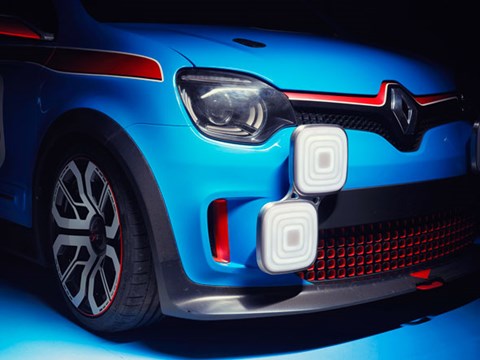
But this is more than mere folly. There may yet be a Renault Sport version of the next Twingo city car that this car prepares us for, though it definitely won’t be powered by a V6 engine, more likely a turbocharged triple. But it will be rear-engined and rear-wheel drive. The result of a joint-engineering project with tech-buddy Mercedes, the next Twingo will share technology, including platforms, with the next Smart. Both Renault and Mercedes will produce a pair of four-seaters, although only Mercedes will build a For-Two micro car.
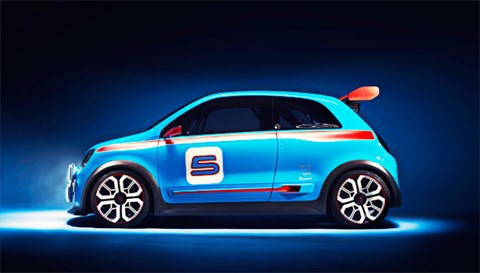
Unlike this concept, and following the lead of its Clio big brother, the production Twingo will come only in five-door form, as previewed by Renault’s Twin Z concept, shown in Milan earlier this year. You can forget the rear suicide doors though. Compared to the sensuously curvy Clio with its pronounced waist and Coke-bottle contours, the Twin’Run is more masculine, muscular and squat. The stance is great. This body is taller than a Fiat 500’s, but the wide arches, accentuated here by the flow of the matt stripes just below the narrow glass area, give the impression of a much lower car.
The square, push-button door release located at the leading edge of the rear quarter reminds of the quarter-panel recess on the original 1972 5s, and the square headlamps housed within the new family face and linked by the grille, are also designed to evoke memories of the Super Cinq. The rounded square is a recurring motif, appearing again in the series of holes cut into the rear window to help draw air from the engine bay, and the modern twist on the legendary Cibie Oscar spotlamps of yore, which resemble high-tech kitchen hob rings. These LED lamps are pure show-car theatre, obviously, and the rear LEDs are also too costly to make it to production. Likely to make the transition though, is the black panel rear hatch, copied from the hatch on rival VW’s Up city car.
Back in the Group B days, Renault’s 5 Turbo was the one to copy. Both Austin Rover and Peugeot turned their superminis into mid-engined rally cars, but went one further than the Renault by adding four-wheel drive. While the Metro 6R4 never fulfilled its WRC promise, the 205 T16 would dominate the 1985 and 1986 championship until a series of fatal crashes brought the curtain down on Group B. Born into an era largely dominated by four-wheel-drive machinery, the mid-engined 5s failed to capture either a drivers’ or manufacturers’ title. They did meet with some success though, Ragnotti scoring victory with the original 5 Turbo on the ’81 Monte in the car’s first WRC outing, and on the ’82 Tour de Corse, a feat he repeated three years later with the Maxi Turbo.
‘I loved the Tarmac rallies, events like the Tour de Corse,’ says Ragnotti. ‘The four-wheel-drive cars were better on the loose stuff like Portugal, Greece and Kenya. It was a really physical car to drive. These days drivers have it so much easier with power steering and sequential gearshifts!’
While the end of Group B called time on the mad mid-engined rally cars, it wasn’t the end for Renault’s mutant hatchbacks. In 1998 Renault revisited the 5 Turbo idea with the Clio V6, creating a one-make series that would take over from the Sport Spider Trophy. Britain’s TWR helped develop the original road-going versions, production heading in-house at Renault Sport for the facelifted, and slightly less twitchy, second-gen cars from 2003.
If you’re smitten with the idea of a V6 Twingo, you’ll have to grab a showroom car when they arrive in 2014 and make your own. The one-off Twin’Run isn’t for sale. A Maxi Turbo is only slightly more attainable. You’ll need deep pockets and plenty of patience to find one. Just 20 were built and the handful that remain are getting on for £200k cars, according to Steve Price of UK 5 Turbo experts, John Price Rallying.

‘Prices of all 5 Turbos have shot up in recent years,’ says Steve, whose dad won the 1985 British Tarmac Championship in just such a car. ‘You used to be able to pick them up for less than £10k. Now even the more common Turbo 2 road cars can cost you as much as £30,000. We even sent a car over to California for a customer.’
Back at the Mortefontaine test track, the Twin’Run’s designer, Csaba Wittinger appears clutching a folder. Inside are his sketches and renderings of the Twin’Run, including a sensational wide-arched version in Ragnotti’s yellow-and-black livery that he wants the great man to sign. Don’t be surprised to see dealers offer similar styling treatments that enable owners to customise their Twingos.
‘I’m so excited to see Ragnotti here with the car,’ he beams. ‘This is what’s great about Renault. There’s all this focus on zero emissions, but at the same time, we’re still allowed to go a little crazy once in a while.’
Will at least a splash of that craziness find its way into the production Twingo? Fingers crossed: a 1000kg kerbweight and a compact turbocharged engine mounted low in the rear could be the makings of a real pocket 911, and a hot hatch better than even the current Renaultsport Clio.